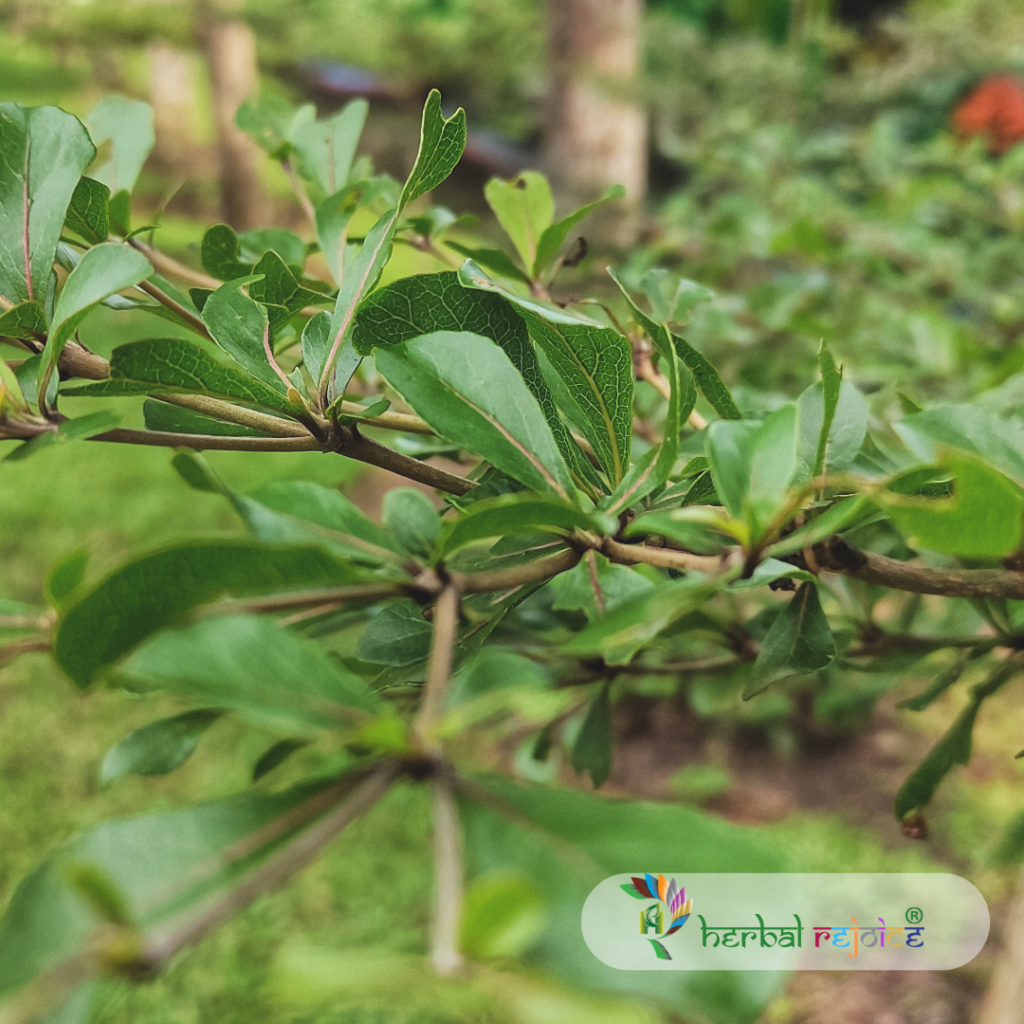Introduction
Terminalia catappa Linn., also known as Indian Almond or Tropical Almond, is a tree belonging to the Combretaceae family. It is cultivated in the hotter regions of India and can also be found in the Andaman Islands. In the Siddha and Tamil traditions, it is referred to as Natuvadom, while in folk medicine, it is known as Jangali Baadaam or Desi Baadaam.
Therauptic Benefits
The bark of Terminalia catappa has several medicinal properties. It is considered to be astringent, antidysenteric, and a mild diuretic. The leaves of the tree have antiseptic and anti-inflammatory effects.
Components of Terminalia catappa
The oil extracted from the kernel of the tree is often used as a substitute for almond oil. It contains oleic, linoleic, palmitic, and stearic acids. The fresh kernels of Terminalia catappa resemble almonds and contain approximately 52.02% fat, 25.42% protein, and 5.98% sugars in the form of glucose.

Additionally, the leaves of Terminalia catappa have sudorific properties and are often applied to rheumatic joints. An ointment made from the juice of the leaves is used to treat scabies and other cutaneous affections.
The husk and endocarp of Terminalia catappa contain tannins and pentosans. The heartwood and stembark of the tree contain beta-sitosterol and its palmitate. The heartwood also contains terminolic acid and triterpenic methyl esters.
Conclusion
In conclusion, Terminalia catappa, commonly known as Indian Almond or Tropical Almond, is a tree that has various medicinal uses. Its bark, leaves, and kernel oil all have beneficial properties and can be utilized in the treatment of different ailments.
Frequently Asked Questions
What is Terminalia catappa Linn.?
Terminalia catappa Linn., also known as Indian Almond or Tropical Almond, is a tree belonging to the Combretaceae family.
Where is Terminalia catappa cultivated?
Terminalia catappa is cultivated in the hotter regions of India and can also be found in the Andaman Islands.
What is Terminalia catappa referred to in the Siddha and Tamil traditions?
In the Siddha and Tamil traditions, Terminalia catappa is referred to as Natuvadom.
What is Terminalia catappa known as in folk medicine?
In folk medicine, Terminalia catappa is known as Jangali Baadaam or Desi Baadaam.
What are the medicinal properties of the bark of Terminalia catappa?
The bark of Terminalia catappa is considered to be astringent, antidysenteric, and a mild diuretic.
What are the medicinal properties of the leaves of Terminalia catappa?
The leaves of Terminalia catappa have antiseptic and anti-inflammatory effects.
How is the oil extracted from Terminalia catappa used?
The oil extracted from the kernel of Terminalia catappa is often used as a substitute for almond oil.
What are the fatty acids found in the oil extracted from Terminalia catappa?
The oil extracted from the kernel of Terminalia catappa contains oleic, linoleic, palmitic, and stearic acids.
How do the fresh kernels of Terminalia catappa resemble almonds?
The fresh kernels of Terminalia catappa resemble almonds in appearance.
What are the nutritional components of the fresh kernels of Terminalia catappa?
The fresh kernels of Terminalia catappa contain approximately 52.02% fat, 25.42% protein, and 5.98% sugars in the form of glucose.
How are the leaves of Terminalia catappa used in traditional medicine?
The leaves of Terminalia catappa have sudorific properties and are often applied to rheumatic joints.
How is the juice of the leaves of Terminalia catappa used in traditional medicine?
An ointment made from the juice of the leaves of Terminalia catappa is used to treat scabies and other cutaneous affections.
What compounds are found in the husk and endocarp of Terminalia catappa?
The husk and endocarp of Terminalia catappa contain tannins and pentosans.
What compounds are found in the heartwood and stembark of Terminalia catappa?
The heartwood and stembark of Terminalia catappa contain beta-sitosterol and its palmitate.
What compound is found in the heartwood of Terminalia catappa?
The heartwood of Terminalia catappa contains terminolic acid.
What compounds are found in the heartwood of Terminalia catappa?
The heartwood of Terminalia catappa also contains triterpenic methyl esters.
How can Terminalia catappa be used in traditional medicine?
Different parts of Terminalia catappa can be utilized in the treatment of various ailments due to their beneficial properties.
What contributes to the medicinal efficacy of Terminalia catappa?
The various chemical compounds found in different parts of Terminalia catappa contribute to its medicinal efficacy.
What are the health benefits of Terminalia catappa?
Terminalia catappa has multiple health benefits including astringent, antidysenteric, anti-inflammatory, and antiseptic properties.
What is the significance of Terminalia catappa in traditional medicine?
Terminalia catappa has a long history of use in traditional medicine due to its diverse medicinal properties.


